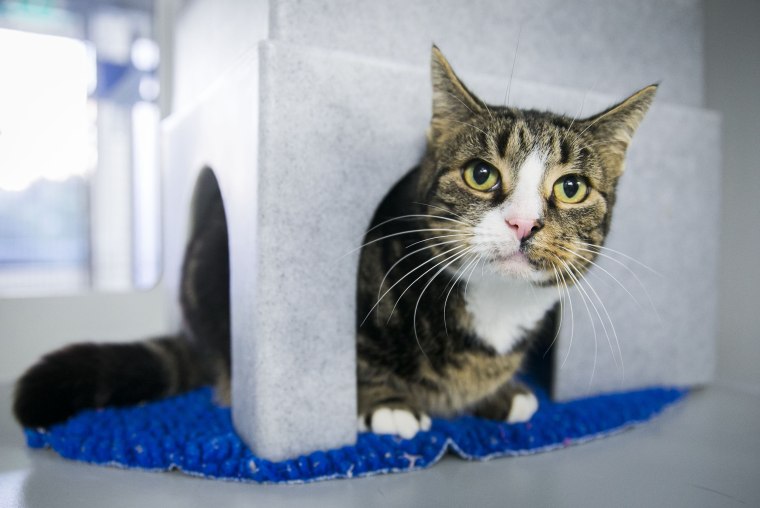New York has become the first state to ban declawing cats in almost all cases, a practice that Gov. Andrew Cuomo called "archaic ... inhumane and unnecessary."
Declawing, a procedure known as onychectomy, involves amputating the first segment of a cat's toes. The procedure was widely popular in the United States for decades to prevent damage or injury from cat scratches, but in recent years animal rights activists and some — but by no means all — veterinary groups have called for its prohibition.
The New York legislation, which Cuomo signed on Monday, isn't a total ban, as has been widely reported. The law carves out exceptions for veterinarians who perform the procedure "for a therapeutic purpose" — like treating a cat's existing infection, disease or injury. Declawing a cat for any other reason — including the health or "convenience" of the owner — is subject to a $1,000 fine.
"Declawing is a cruel and painful procedure that can create physical and behavioral problems for helpless animals, and today it stops," Cuomo said in a signing statement on Monday. "By banning this archaic practice, we will ensure that animals are no longer subjected to these inhumane and unnecessary procedures."
The law explicitly prohibits declawing for "cosmetic or aesthetic reasons or reasons of convenience in keeping or handling the cat," which led the New York State Veterinary Medical Society to oppose it, saying declawing should be legal for healthy cats, if only as a last resort.
However well-intentioned the law is, the group said, it will only mean that more owners will simply abandon their cats to the streets — not just owners fed up with scratched ankles and sofas, but also owners with weakened immune system, diabetes or hemophilia, which can put them at greater risk of infection from cat scratches.
"The decision to declaw a cat is a medical decision that should be made by the owners in consultation with a trained, licensed and state-supervised veterinarian operating within the appropriate standards of practice," the society said.
Likewise, the American Veterinary Medical Association says, "In some cases declawing may be an alternative to relinquishment, outdoor housing or euthanasia."
But in its guidance to veterinarians, the Centers for Disease Control and Prevention, or CDC, says that even in households with vulnerable people, "declawing is not recommended" because "cats need their claws for a number of activities." The CDC advised vulnerable cat owners to "avoid rough play with cats and situations in which scratches are likely."
Declawing most cats is already illegal in much of Europe and in several major U.S. cities, including Los Angeles and San Francisco. Similar measures are under consideration in California, Massachusetts and New Jersey.
Like the New York law, the California and New Jersey measures would ban declawing for the "convenience" of owners. The Massachusetts measure doesn't explicitly say it would do the same, but it would limit declawing to use for "therapeutic" reasons to address a "condition in the claw that jeopardizes the cat's health."

